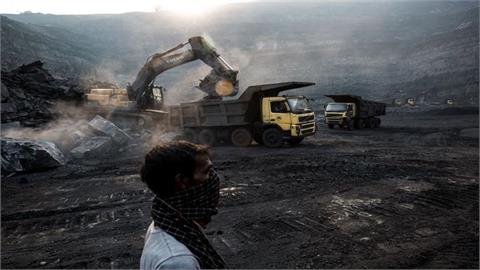by Tsvetana Paraskova* Carbon capture, utilization, and storage (CCUS) technology is being hailed as an indispensable part of the energy transition. Net-zero emissions “will be virtually impossible without CCUS,” says the International Energy Agency (IEA), while start-ups and Big Oil are looking to create a market for carbon capture to tackle climate change
While the energy industry is working to capture and store carbon dioxide into carbon sinks in the North Sea, for example, bioengineers are working to address the problem with CO2 emissions and climate change from nature’s perspective. They work to make plants suck up more carbon dioxide and hold it in longer roots in the soil for longer periods of time.
Research laboratories, universities, institutes, and coalitions of farmers and scientists are looking to address the world’s carbon problem by boosting the natural ability of plants to absorb and store carbon dioxide by bio-engineering and gene-editing crops.
Various bioengineering solutions have been proposed, but none of those is yet technically ready for large-scale adoption in such a way so as to significantly influence the world’s pathway to limit global warming to 2 degrees Celsius, Thunder Said Energy, a research consultancy for energy technologies, comments in a recent research note.
"We find exciting ambitions, and promising pilots, but the space is not yet investable,” Thunder Said Energy noted.
Plants Are Natural Carbon Dioxide Sinks
Still, scientists and bioengineers are proposing methods to edit the genes of crops to make them more efficient carbon capture machines, while boosting crop yields at the same time, helping farmers without the need for more land use for agriculture, which is a problem today with a growing global population that needs more and more food.
Some would argue about the ethics and regulatory implications of such gene-editing. Yet the researchers working on bioengineering that could also help to eliminate carbon dioxide from the atmosphere and store it in the soil say that there are a lot of benefits and co-benefits for the environment and crops.
Plants suck up more CO2 than they release through soil and vegetation respiration every year, according to a research paper from earlier this year of scientists from the University of Würzburg in Germany which has 14 Nobel laureates among its researchers and professors. Plants absorb almost 123 gigatons of CO2 via photosynthesis, while they release 120 gigatons of CO2 annually. However, human activity releases another 10 gigatons of CO2, mostly by burning fossil fuels, and this is the carbon problem that the world needs to offset in it were to reach net-zero emissions.
Scientists Work To Boost Plants’ CO2 Sequestration
The researchers from the University of Würzburg are working to make photosynthesis in crops more efficient by modifying the metabolism of plant cells.
Scientists in the U.S. are also hard at work to make crops more efficient carbon capture machines capable of offsetting more CO2 emissions.
"If we can optimize plants’ natural ability to capture and store carbon, we can develop plants that not only have the potential to reduce carbon dioxide in the atmosphere but that can also help enrich soils and increase crop yields,” says Joanne Chory, Professor at the Salk Institute for Biological Studies and Co-Director of Salk Institute’s Harnessing Plants Initiative (HPI).
Plants are natural carbon scrubbers, but they can keep CO2 only temporarily. Therefore, the scientists in the initiative are developing a new generation of crop and wetland plants that can store carbon in the soil in longer and longer-lasting roots.
Salk Institute’s CO2 Removal on a Planetary Scale (CRoPS) project is developing an approach to increase the plant tissue suberin, which loves carbon.
"By increasing root mass, depth and suberin content, Salk researchers will transform wheat, rice, corn and other crops into carbon-storing machines. In addition, more ground carbon means farmers benefit from improved soil health,” the Salk Institute says.
The Land Institute of Salina, Kansas, has developed the Kernza grain, a variant of wheat but a perennial plant. Currently, soil carbon scientists are researching how much carbon Kernza grain production can sequester.
Land Institute was one of the organizations asked last year to submit a white paper to the Bipartisan Policy Center to assist in informing the House Select Committee on the Climate Crisis on the science of carbon sequestration in forests and soils. In its white paper submitted this year, the Land Institute said that "Soil carbon sequestration is the most beneficial source of negative emissions for the global climate change mitigation portfolio, and current grain crop production acreage is the prime candidate for major sequestration opportunities.”Environmental And Agricultural Benefits Of Biotechnology
"In addition to providing a major carbon sequestration opportunity, perennial polyculture grain cropping systems have the potential to substantially reduce emissions of the potent greenhouse gas (GHG) nitrous oxide from agricultural soils, and to reduce carbon dioxide emissions from farm equipment operations and the synthesis of inputs, especially nitrogen fertilizers,” the Land Institute said.
An Energy Futures Initiative report this month argues that advances in biotechnology that help to increase CO2 uptake in soils and land ecosystems can have major co-benefits. These include boosting soil health and fertility, higher yields, reduced demand for water and fertilizer, and improved nutritional quality.
Those methods "should proactively address the ethical, legal, and social concerns raised by biotechnology innovation,” the report says, but it also notes that "research should also focus on development of improved methodologies for measurement of carbon reduction impacts to support new revenue streams as well as advance carbon policy objectives.”
Biotechnology
is still many years away from making meaningful contributions to carbon
capture. Yet, it could turn out to be one of the ways to address the
world’s climate and food security problems.
* Tsvetana Paraskova is a writer for Oilprice.com with over a decade of experience writing for news outlets such as iNVEZZ and SeeNews. *
(Oilprice.com,




